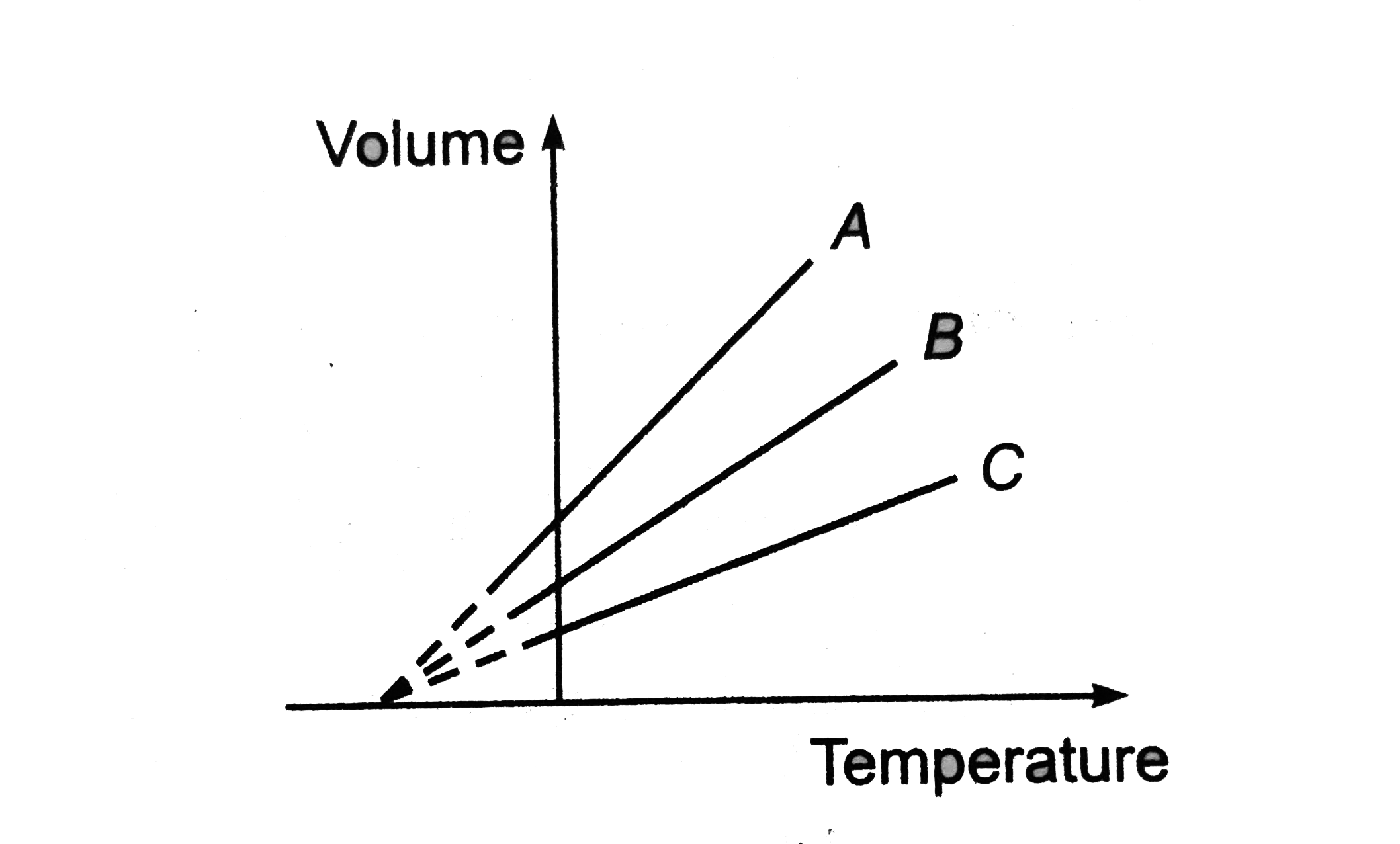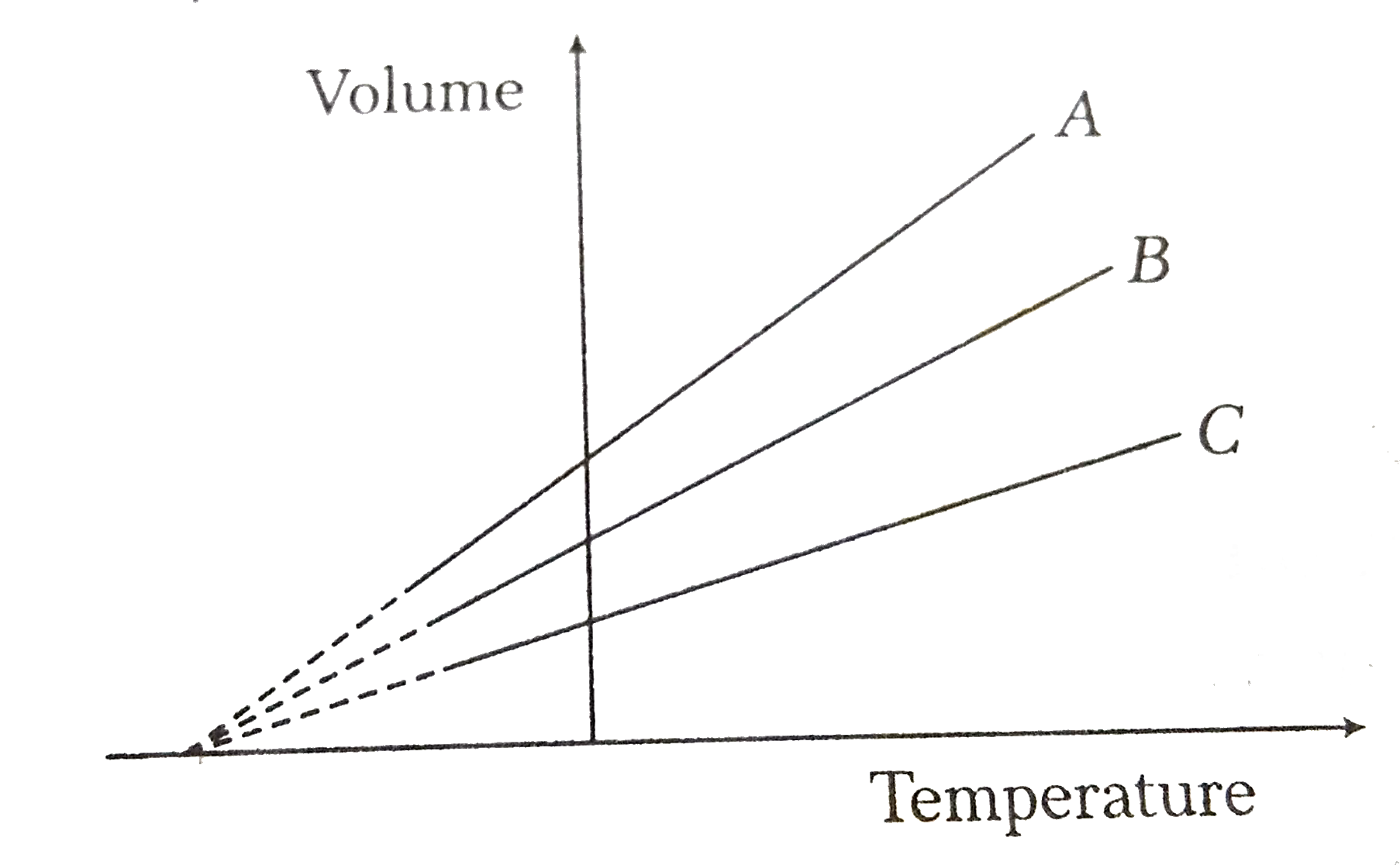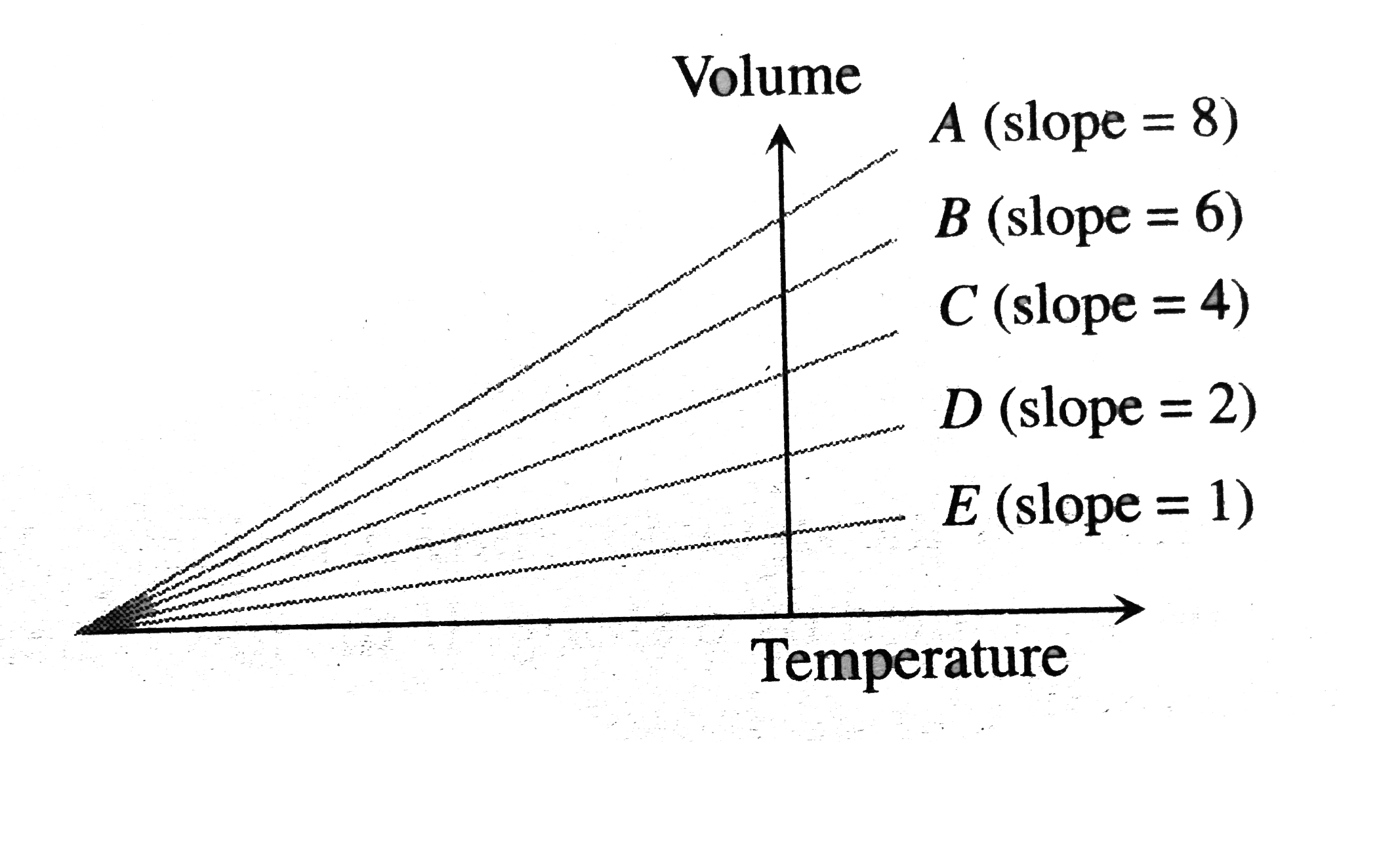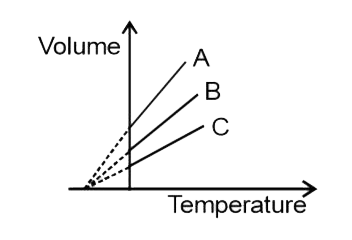The expansion of an ideal gas of mass (m) at a constant pressure (p) is given by the straight line (B) Then, the expansion of the same ideal gas of mass 2m at a pressure 2p is given by the straight line.
 .
.
A
C
B
A
C
B
D
none
Video Solution
Text Solution
The correct Answer is:C
Slope ∝MRMP
|
Updated on:21/07/2023
Topper's Solved these Questions
- BOOK - BANSALCHAPTER - KINETIC THEORY OF GASESEXERCISE - Exercise-24videos
KINETIC THEORY OF GASES
- BOOK - BANSALCHAPTER - KINETIC THEORY OF GASESEXERCISE - Reasoning Type1videos
KINETIC THEORY OF GASES
- BOOK - BANSALCHAPTER - KINETIC THEORY OF GASESEXERCISE - Practice Exercise3videos
KINETIC THEORY OF GASES
- BOOK - BANSALCHAPTER - HEAT TRANSFEREXERCISE - Exercise89videos
HEAT TRANSFER
- BOOK - BANSALCHAPTER - UNIT DIMENSION, VECTOR & BASIC MATHSEXERCISE - Exercise10videos
UNIT DIMENSION, VECTOR & BASIC MATHS
Similar Questions
Knowledge Check
- Question 1 - Select One
The expansion of an ideal gas of mass ma t a constant pressur p is given by the straight line B. Then, the expansion of the same ideal gas of mass 2m at a pressure 2p is goven by the straight line.
 ACBACBDNone of these
ACBACBDNone of these - Question 2 - Select One
The expansion of an ideal gas of mass m at a constant pressure P is given by the straight line D. Then the expanison of the same ideal gas of mass 2m at a pressure P/2 is given by the straight line
 AEBCCBDA
AEBCCBDA - Question 3 - Select One
If an ideal gas is heated at constant pressure :
Athe volume increasesBthe mass of gas remains sameCthe kinetic energy of the molecules increasesDattraction forces between gas particles increases
For given mass of an ideal gas at constant temperature
View SolutionThe expansion of unit mass of a perfect gas at constant pressure is shown in the diagram . Here :-
_E01_045_Q01.png) View Solution
View SolutionWork done during expansion of an ideal gas against constant opposing pressure is given by
View Solution3.0 moles of ideal gas is heated at constant pressure from 27∘C to 127∘C. Then the work expansion of gas is
View SolutionFor an ideal gas V−T curves at constant pressure P1 & P2 are shown in figure, from the figure
_E01_061_Q01.png) View Solution
View Solution


